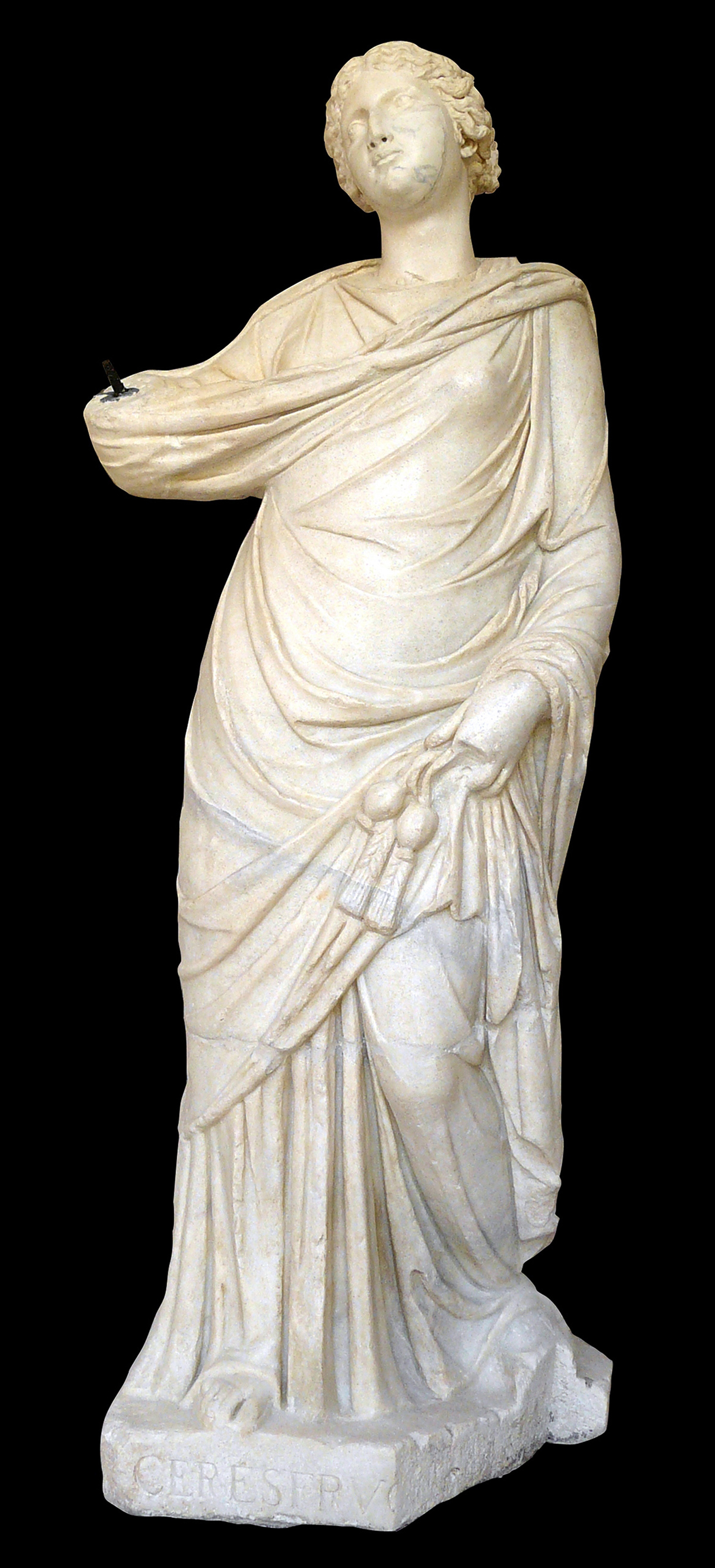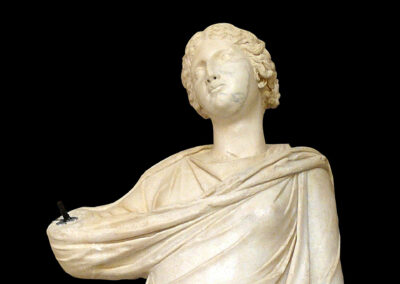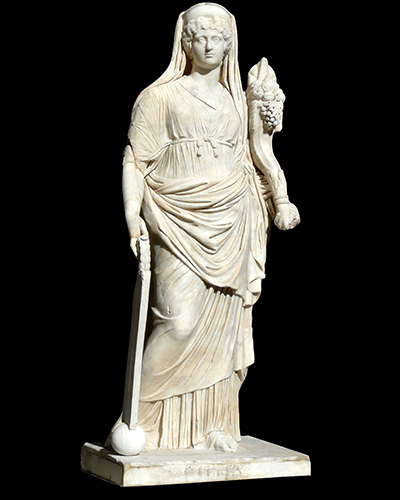Statue made up of two pieces of different origins. Firstly, a torso carved from a single block of marble, which has lost its original head, and which would be the support for a portrait of a Roman woman. in formam dearum, perhaps a member of the imperial family, the poppies and ears of corn being understood as a reference to Ceres and not as a sepulchral symbol. From the shape of the folds of the mantle, the torso could be dated to around the middle of the 2nd century AD. Secondly, a head which is not that of a portrait, but the representation of a goddess in the tradition of the Venus of Cnidus which, due to the stylistic kinship with the portraits of Vibia Sabina, wife of Hadrian, could be dated to the end of the Hadrianic period or the beginning of the Antonine period.
Until 1854 it was located in one of the corners of the courtyard of the Casa de Pilatos, as it appears in an engraving by Alexandre Laborde from the early 19th century. It was later moved to the access gallery to the Jardín Grande and, in the 20th century, to its current niche in the west gallery of the aforementioned garden, known as the Cenador. Its place in the courtyard of the Casa de Pilatos is currently occupied by the statue of Faustina Minor, deified as Fortuna.




